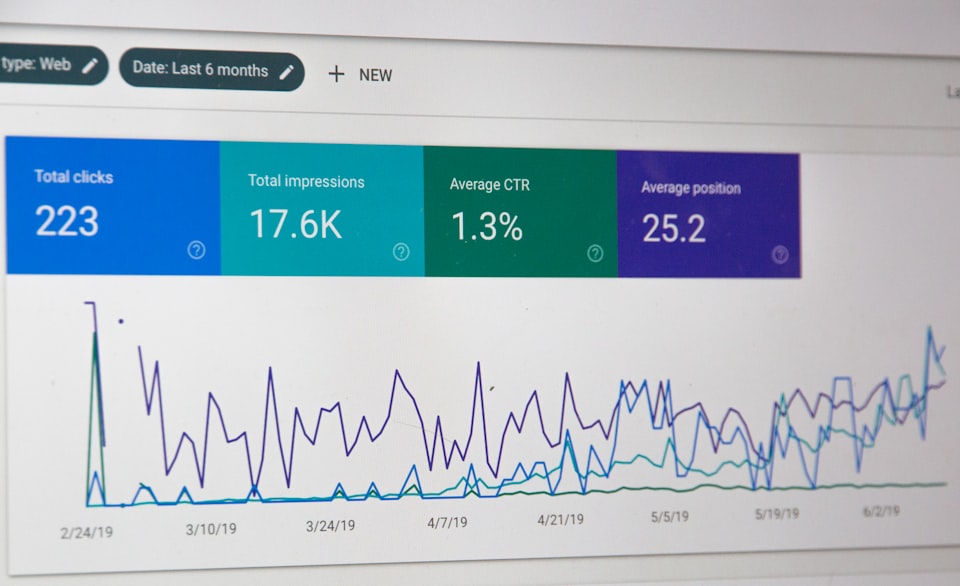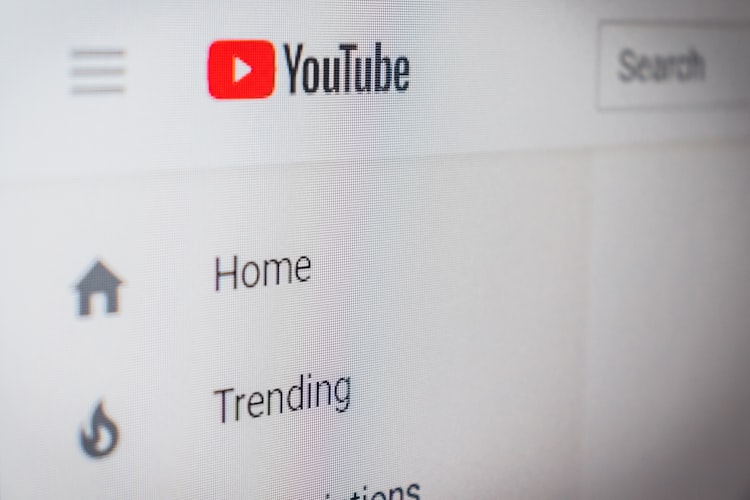Video SEO: How To Rank Your Videos On Google

It's clear, in today's digital landscape - video is king, and if you're not leveraging its potential, you're missing out on a massive audience.
This guide dives deep into the world of Video SEO, equipping you with the knowledge and strategies to propel your videos to the top of Google's search results. Here's how you can transform your videos from hidden gems to SEO powerhouses, attracting more viewers and boosting your online presence.
Understanding Video SEO
What is Video SEO?
Think of SEO (Search Engine Optimization) as the magic sauce that helps websites rank higher on search engines. Video SEO applies the same principles but specifically for video content on platforms like YouTube. It involves optimizing your videos with relevant keywords, crafting compelling descriptions, and strategically promoting them to ensure YouTube understands your video's content and ranks it for the right searches.
Here's the key distinction: Traditional SEO focuses on text content, whereas Video SEO considers both visual and audio elements alongside titles, descriptions, and metadata.
Why Video SEO Matters
Consider this: according to a report by HubSpot, over 50% of consumers prefer video content over other forms of content from brands. This staggering statistic highlights the importance of video content and underscores the need for optimizing it to reach the widest audience possible. By implementing effective Video SEO strategies, you can:
- Tap into a massive and ever-growing audience
- Improve your channel's ranking and visibility on YouTube
- Drive more engagement with your videos
- Ultimately generate more conversions

How Google and YouTube Ranks Videos
While the exact ranking algorithm remains a secret, YouTube considers several factors when determining where to place your video in search results. These factors can be broadly categorized into three main areas:
- Keywords: Just like with traditional SEO, keywords play a crucial role in Video SEO. YouTube analyzes your video title, description, tags, and even the audio content within the video itself to understand its relevance to specific search queries.
- Relevance: YouTube strives to deliver the most relevant results to users. This means your video content needs to genuinely address the user's search intent. Don't just stuff keywords; create informative and valuable videos that answer viewers' questions.
- User Experience: Watch time, click-through rates (CTR), and audience retention are all crucial metrics for YouTube. A video with high engagement signals to YouTube that it's providing a positive user experience, which can significantly boost its ranking.
Key Strategies For Video SEO Success
Now that you understand the fundamentals, let's delve into the practical strategies you can implement to optimize your videos for search.
1. Conducting Keyword Research
AKA: Finding Your Audience's Burning Questions
Before you hit record, it's essential to understand what your target audience is searching for online. Keyword research is the foundation of any successful Video SEO strategy. Here are some tools and techniques to get you started:
- Free Keyword Research Tools: Google Keyword Planner and SEMrush offer free keyword research options to help you identify relevant keywords with search volume.
- Competitor Analysis: See what keywords your competitors are ranking for and use them as inspiration for your own content strategy.
- Long-Tail Keywords: Don't just focus on high-volume, generic keywords. Explore long-tail keywords that are more specific and have lower competition.
Once you have a list of relevant keywords, strategically integrate them throughout your video content, but prioritize natural integration over keyword stuffing.
2. Optimizing Video Content
Remember, SEO doesn't stop at recording. Here's how to optimize your video content for search:
a. Video Titles and Descriptions
A compelling title can be the difference between a clicked video and one that's scrolled past. Incorporate relevant keywords while keeping titles engaging and descriptions informative, offering a sneak peek into the video content.
b. Video Tags
Tags are like labels that categorize your video. While not as influential as keywords in titles and descriptions, they still play a role in helping Google understand your video's content. Include a mix of broad and specific tags relevant to your video, but avoid keyword stuffing.
Here are some additional tips for video tags:
- Use relevant variations of your target keyword.
- Incorporate popular industry terms.
- Target long-tail keywords related to your video content.
- Limit yourself to around 10-15 tags.
c. Thumbnails
Your video's thumbnail is its billboard on the internet. It's a crucial element that can significantly impact your click-through rate (CTR). Here's how to create attention-grabbing thumbnails:
- High-Quality Image: Use a clear, crisp image that accurately reflects your video content.
- Compelling Text Overlay: Add a short, clear headline or question to entice viewers to click.
- Bold Colors and Contrasting Elements: Make your thumbnail visually pop and stand out from the search result crowd.
3. Enhancing User Engagement
The ultimate goal of Video SEO is not just ranking high but keeping viewers engaged. Here are some strategies to boost watch time and user engagement:
- High-Quality Content: This goes without saying. Focus on creating informative, valuable, and entertaining videos that genuinely address your audience's needs.
- Strong Hook: Grab viewers' attention within the first few seconds with a compelling intro, question, or surprising fact.
- Clear Structure: Organize your video logically with a clear introduction, body, and conclusion.
- Subtitles and Closed Captions: Cater to a wider audience and improve accessibility by including subtitles and closed captions.
- Calls to Action (CTAs): Prompt viewers to take action throughout your video, whether it's subscribing to your channel, visiting your website, or checking out your latest blog post.
By prioritizing user experience and engagement, you'll not only improve your video's ranking but also cultivate a loyal viewership.
4. Promoting Your Video for Maximum Reach
Creating great video content is only half the battle. To maximize your reach, you need to actively promote your videos across various platforms. Here are some effective techniques:
- Social Media Promotion: Share your video on your social media channels, relevant online communities, and Facebook groups.
- Embed Your Videos: Embed your videos on your website, blog posts, and landing pages to drive organic traffic.
- Email Marketing: Include your video in your email marketing campaigns to reach your subscriber base.
- Collaborations: Partner with influencers or complementary brands in your industry for cross-promotion opportunities.
The key is to get your video in front of the right audience and create a buzz around your content.

Measuring Your YouTube SEO Success
So you've implemented these Video SEO strategies, but how do you know if they're working? Here's how to track your progress and refine your approach:
- Tools and Metrics for Tracking: YouTube Analytics is a comprehensive suite of analytics that provides detailed data on your YouTube channel's performance, including views, watch time, audience demographics, engagement metrics, and traffic sources.
Key Metrics to Monitor
Once you have access to these analytics tools, focus on the following key metrics to assess your Video SEO success:
- Views: This is a basic metric indicating how many times your video has been viewed.
- Watch Time: This metric tells you how long viewers are engaged with your video content. Aim for a high average watch time to signal strong audience retention.
- Click-Through Rate (CTR): This metric indicates the percentage of viewers who click on your video thumbnail after seeing it in search results. A high CTR suggests an enticing thumbnail and relevant video content.
- Engagement Metrics: Metrics like likes, comments, shares, and subscriptions all indicate audience engagement. A high level of engagement suggests viewers are finding your content valuable and interesting.
- Ranking: Track your video's ranking for your target keywords in search results. This will help you gauge the effectiveness of your keyword optimization efforts.
By consistently monitoring these metrics, you can gain valuable insights into your video's performance and identify areas for improvement.
Refining Your YouTube SEO Strategy Based on Data
Don't be afraid to adapt your Video SEO strategy based on the data you collect. Here's how:
- Analyze which videos perform well and identify commonalities. Is it a specific video format, topic, or length that resonates with your audience? Replicate those elements in future content.
- See which keywords are driving traffic and optimize other videos accordingly.
- Identify videos with low engagement and explore ways to improve them. Can you tighten the editing, add captions, or create a more compelling intro?
Remember, SEO is an ongoing process. By continually analyzing your data and adjusting your strategy, you can refine your video content and optimize it for long-term success.
Conclusion
Video content is a powerful tool in the digital marketing toolkit but harnessing its full potential requires a mastery of Video SEO. From conducting keyword research to promoting your videos and monitoring their performance, each step plays a crucial role in enhancing visibility and engagement.
So, are you ready to transform your videos into SEO powerhouses, driving unprecedented traffic to your content? The world is waiting to watch – what story will you tell them?




![Best YouTube Outro Templates [Tips + Inspiration]](/blog/content/images/size/w750/2022/11/Blog-Articles---Featured-Images-Illos--23-.png)
